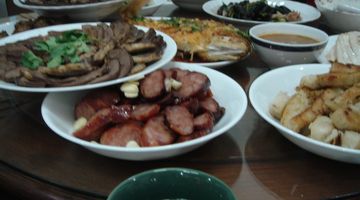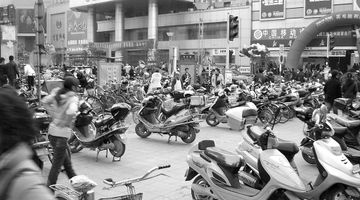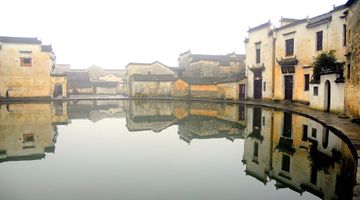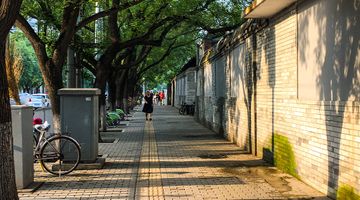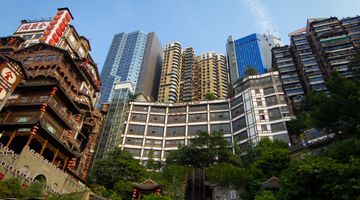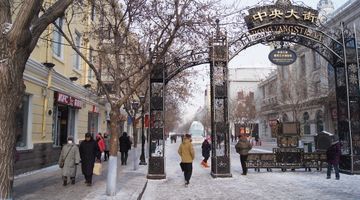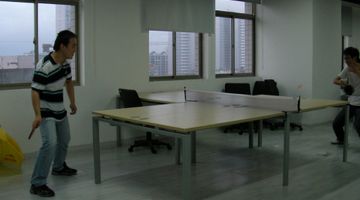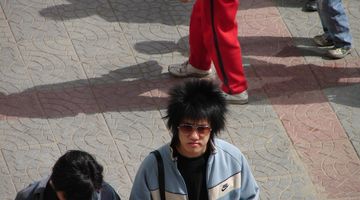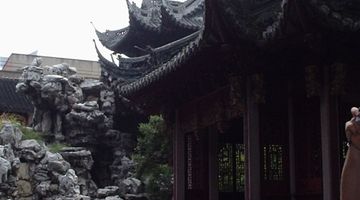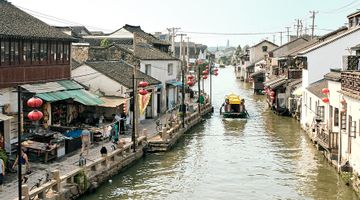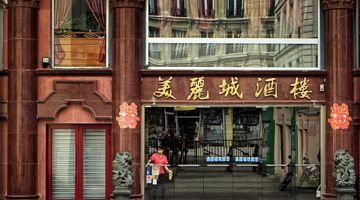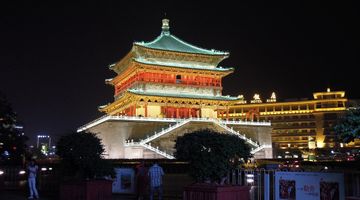Wuhan China – Your Quick Travel Guide
in a nutshell
The city of Wuhan is the largest city in central China as well as being the capital of Hubei province; it is an amalgamation of three cities Wuchang, Hanyang and Hankou which are divided by the rivers Yangtze and Han that meet here a few hours downstream from the Three Gorges Dam.
Why Go to Wuhan
Wuhan does not receive the numbers of international tourists that are attracted to cities like Beijing or Shanghai that does not mean there is nothing for tourists just that foreign visitors have not discovered this city yet.
There is tasty food, a great nightlife as Wuhan has the biggest student population in China with over one million students in 80 universities. It is an important transport hub for travellers by road, rail, and air, or you could travel by boat with the important waterway of the Yangtze River making Wuhan an important inland port.
History buffs will love the city with more than 10 major museums; it was also the city that began the revolution in 1911 that led to the creation of China as it is today. A major attraction is the Yellow Crane Tower on top of Snake Hill; from the top you have a great view across the Yangtze to Hankou and Hanyang. Wuhan is known as the city of lakes, there are definitely more than 100, some claim there are 166; the East Lake is the biggest lake in a city in China. Getting around the city is easy with the ever expanding Metro and hundreds of bus routes making travel within the city affordable and convenient.
When is the Best Time to Visit Wuhan?
The best time to visit the city of Wuhan is in the spring or early summer from March until May, at this time of year the flowers in the city’s many parks are in full bloom. The cherry blossoms attract lots of Chinese visitors. The cool weather from September until November is another popular time to visit Wuhan; both times of year are when there is the least rain.
Where to Stay in Wuhan
There are more than 2,500 hotels in Wuhan so certainly plenty of choice to suit all tastes and all budgets. The luxurious hotels include several with a five star rating and cost from CNY500 per night while there are hundreds of unrated cheap rooms available for around CNY50. There are only a few western style hostels in the city with a bed in a dorm room available for CNY 50 per night at the Bingo hostel. There are a few apartment hotels, more than just a room in that they contain a small kitchenette but these are away from the tourist sites in a business development zone.
Hotels and hostels here are generally good value; they will have air conditioners that act as heaters during the winter. The best way to travel easily around the city is on the Metro, so I would advise you to find a hotel close to a metro station. I have yet to find a hotel in Wuhan that does not have Wi-Fi although the speed of the connection can vary considerably.
Where and What to Eat in Wuhan
The food in Wuhan is a mixture of traditional foods from Sichuan and Shanghai with lots of cheap snack foods available from several street markets across each of the three cities that Wuhan comprises of. It is a university city so close to its many universities you will find lots of small cheap restaurants to cater for those on a low budget. Anyone wanting to spend a bit more on their food is also catered for with medium range and high quality restaurants in several parts of the city. Expect to pay a few CNY for a snack meal, CNY20-30 per dish at a mid range restaurant and over CNY100 per person at a higher quality one. Wuhan is famous for ‘ReGanMian’ (Hot Dry Noodles) a spicy breakfast snack that is delicious at any time of day, and Spicy Ducks Neck.
How to Get Around Wuhan
The best and most convenient way to get around the city is by using the Metro. Wuhan currently has seven lines in operation with more under construction. The metro system is very easy to navigate your way around; payment is through machines that have an English option, maps have station names in English and announcements are made in English. The metro operates from 5.30am until 11pm every day.
Buses operate to all areas of the city but unless you understand Chinese they can be difficult to travel on. Pay CNY 2 or 3 when you get on the bus and prepare to exit when you approach your stop. The drivers are always in a hurry and don’t like to wait. All information is in Chinese, have your destination written in Chinese and generally people will be very helpful in getting you to where you need to be. Buses like the metro can be extremely busy particularly at peak travel times.
Taxis cost from CNY8 or 10 for the first 3km. Taxi drivers do not speak English so have your destination written down and ensure they use the meter. There are lots of unofficial taxis in Wuhan and agree a price before you start or they will overcharge you.
How to Get To and From Wuhan
Wuhan has excellent connections with the rest of China and beyond through various means of transport.
By air
Wuhan’s Tianhe International Airport is 26 kilometres to the north of the city; it is the 14th busiest airport in China and has flights to all the major cities in the country in addition to international flights from Wuhan to San Francisco, Paris, Moscow, Singapore, Seoul, Bangkok and Tokyo.
Flights from Wuhan to Beijing take 2 hours and 20 minutes and cost a little under CNY2000.
Flights from Paris direct to Wuhan take 11 hours 30 minutes and cost from CNY8000. There is one flight daily from San Francisco to Wuhan taking 16 hours and costing from CNY11000.
Shuttle buses operate from the airport to the city centre and take around one hour. Taxis will cost at least CNY100, probably more and the metro line 2 is currently being extended to the airport and due to open in 2018.
By bus
Express buses to and from Wuhan operate from numerous cities across the country and due to the quality of the highway network they can be a good alternative to the train. Wuhan to Beijing is 1300 kilometres or a little over 800 miles and takes about 16 hours. Shanghai to Wuhan is 950 kilometres and takes around 12 hours. Sleeper buses are in use on the longer overnight routes and offer a cheaper option than the train although they are not the most comfortable way of sleeping while travelling.
By train
Wuhan has three main train stations, Wuhan in the north east of the city, Wuchang is fairly central and Hankou is on the northern side of the Yangtze River. Wuhan station is used for fast express trains and trains from Guangzhou to Wuhan take just four hours and costing from CNY463. Slower trains from Wuchang take 12 hours and cost CNY138 for a seat or CNY255 for a sleeper. Sometimes the price of the fast train is comparable to a sleeper ticket on a slower train. A second class seat on a fast train from Chongqing to Wuhan takes 7 hours and costs CNY258, while a sleeper ticket costs CNY255.5 and that journey takes 12 hours. There are 62 trains every day from Shanghai to Wuhan with journey times ranging from 4 hours to over 17 hours.
Is it Safe in Wuhan?
Wuhan is an extremely safe place to visit even walking alone late at night; it is very unusual to hear of a foreigner being attacked in the city.
Petty crime such as pick pocketing can occur in busy places such as bus or train stations or in shopping malls. Take care of your belongings and do not carry large sums of cash.
The standard of driving is generally ok although jumping red lights does occur; some drivers think the red light does not include them. Take care when crossing the road as even on a green crossing signal there will be traffic thinking they should have the priority.
Should you fall ill or require medical assistance there are some excellent hospitals in Wuhan as well as one international hospital.





